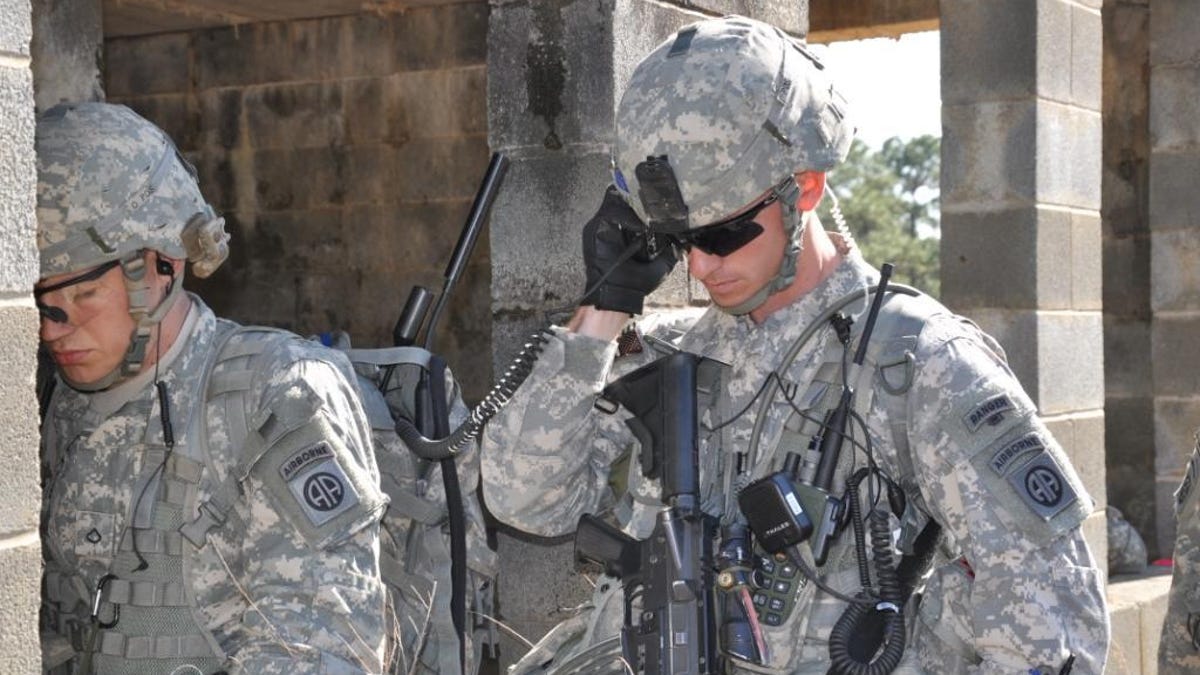Army enlists Android for battlefield comms
A smartphone framework based on Google's Android OS is undergoing evaluations. The Army is also looking to let commercial developers create apps for soldiers on the front line.

The U.S. Army is establishing a beachhead on the shores of smartphone tech, and it's got Google's Android operating system in its ranks.
The Android-based Joint Battle Command-Platform (JBC-P) gadget is undergoing evaluations and moving closer to deployment, according to a report on the Army Web site earlier this week. The JBC-P Handheld, which is currently in prototype form, is part of a broader effort by the Army to bring more mobile communications capabilities to soldiers engaged in tactical operations.
It's a significantly modified version of Android, called Mobile/Handheld Computing Environment, that's running in the JBC-P Handheld. The Army is supplementing the platform with several mission command applications, including mapping, blue force tracking, tactical ground reporting, and critical messaging. In addition, soldiers will likely have access to other applications including an address book and Open Office.
Over the summer, the Army plans to release a software development kit for third-party developers to create other applications that might be of use to soldiers. The applications built into the platform can be enhanced by third-party developers, as well, the Army.mil report says.
"It's like when you get an iPhone and you have the Apple-made apps: the contacts, the e-mail," J. Tyler Barton, an engineer working with app makers in the Army Research, Development, and Command division, said in the report. "Then other applications are free to use those apps, or to go above and beyond that."
Having this sort of handheld on the front lines could be a boon for soldiers, the Army claims. It cited one implementation where a soldier on a field exercise input locations of enemies and roadside bombs into the device, which was then accessible from handhelds of other soldiers who might be traveling through that area. The Army also designed the platform to make it easier for soldiers to track others in their own units.
The Army has a number of pilot programs going to evaluate smartphone technology (not limited to Android), for both operational and training uses, and in both secure and unsecured environments. Earlier this year, Lt. Gen. Michael Vane, director of the Army Capabilities Integration Center, pointed out to a blogger roundtable that the people that U.S. soldiers are fighting have had a great deal of success using cell phones generally.
"One of the most significant feedbacks you get from soldiers in theater is they look at their Afghan army compatriots or the Taliban guy, who has a cell phone, and then the Army guy looks at his MBITR or his 117G radio, and we want to deny that capability to our own Soldiers even through the enemy is using them?" Vane asked, according to an Army News Service report in February.
In early March, after watching members of the 82nd Airborne Division make use of the Android-based smartphones in conjunction with standard tactical radios, the Army's vice chief of staff offered praise for the technological capabilities.
"What I watched with interest today was the ability to take pictures of high-value targets, immediately provide them to the company or to the battalion command post," Gen. Peter Chiarelli said. "I saw the ability when a soldier is wounded to take a picture of the wound and to pass that to the doctors, so that medics can make sure that they are treating the soldier in the appropriate way, given the wound that he has received. So there are many, many applications of this."
Meanwhile, it's going to take some time before the JBC-P Handheld is actually in the hands of U.S. soldiers in real-world missions. The Army doesn't expect it to be fielded to its people--or to the Marine Corps--until the government's 2013 fiscal year.

